The American National Park System, administered by the Department of the Interior through the National Park Service, is one of the true crown jewels of the U.S. government. National Parks promote America's heritage and history, education, recreation, natural resources, ecology and the environment, cultural diversity, and the country's natural beauty. Promoting public access has been the goal of the NPS since its inception, while at the same time seeking to protect the environment and wildlife. As of 2021, there were 63 national parks in the United States, in addition to which the NPS maintained 85 national monuments, 13 national lakeshores and seashores, and numerous other properties, including national historical parks and sites, national military parks, and many other designated areas.
They are among the most popular tourist attractions in the country. Before Covid-related travel restrictions, park visitation was increasing every year; by 2019, visits to America’s national parks had surpassed 327 million (in a country with a population of about 330 million). Here are the ten most popular national parks in the United States, based on visitor numbers. Together, these ten account for about 30% of all annual visits to the National Park System.
10. Zion National Park (Utah)
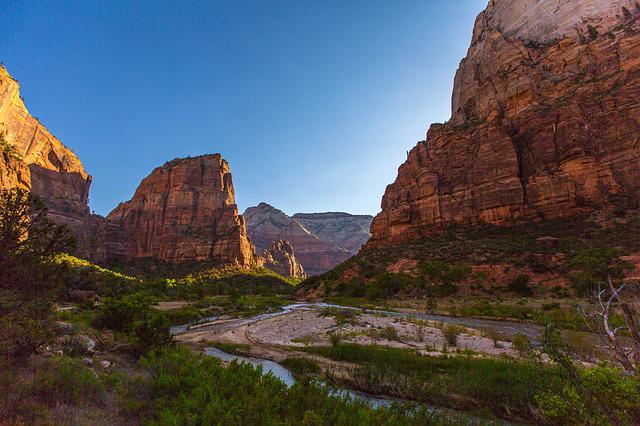
Established by an act of Congress as a national park in 1919, which stated, “The purposes of Zion National Park are to preserve the dramatic geology, including Zion Canyon and the labyrinth of deep and brilliantly colored Navajo Sandstone canyons formed by the extraordinary processes of erosion at the margins of the Colorado Plateau; to preserve the wilderness character of the Park and its wild and scenic river values; to protect the evidences of human history; and to provide for scientific study and for the enjoyment and education of the public.” Phew. The park, which covers more than 225 square miles, includes waterways and deserts, mountainous terrain and deep canyons, and is a Congressionally designated wilderness area for more than 85% of its lands.
Its stunning views and varied topography have made the region a favourite among Hollywood filmmakers , from the silent film era to more modern productions. About 5 million visitors visited the park in 2021, with numbers down due to its remoteness and the ongoing impact of the coronavirus on travel. Like much of America's national park system, some parts not for the faint of heart, because the area is rife with terrain, weather, and wildlife hazards. It's not hard to find rattlesnakes, venomous monsters, mountain lions, bears, wolves, coyotes, scorpions, and other less-friendly creatures in the park, even in areas more frequented by humans. And that's not all. Even deer and squirrels can be dangerous to humans in Zion and all of America's national parks.
9. Gulf Islands National Seashore (Mississippi, Florida)

Stretching along the Gulf of Mexico coastline with Florida and Mississippi, with some areas accessible only by boat, Gulf Islands National Seashore was created in 1971. The continuous wilderness on the mainland was added to the park in 1978. Both have not escaped damage from the elements. The 2010 Deepwater Horizon disaster and liquidation of this large Oil spill cleanups have proven particularly difficult and costly. The Atlantic hurricane season has produced several devastating storms, each of which has caused damage to both the natural environment and the man-made infrastructure in the park.
Underwater structures provide opportunities for scuba diving and snorkeling ; Both prepared and primitive campsites are offered, and almost all of the park, located in Florida, is accessible by car. Several popular beaches, hiking and nature trails, and preserved military installations, as well as boating, attract about 5.5 million visitors to the park each year, although most of the park in Mississippi is accessible only by boat.
8. Lincoln Memorial (Washington, D.C.)
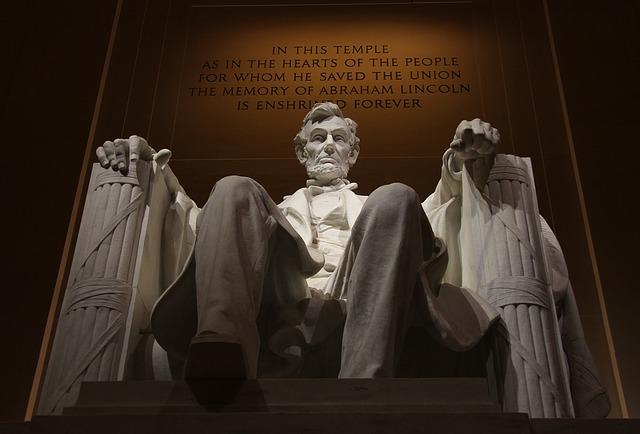
Washington, D.C. is a city that offers visitors a long list of attractions, including government buildings, the National Archives, numerous sites offered by the Smithsonian Institution, and more, too many to list. However, year after year, one of the most popular is Lincoln Memorial , which welcomes more than 5.8 million visitors each year. In addition to viewing the massive seated Lincoln statue designed by Daniel Chester French, visitors are rewarded with views that stretch along the National Mall, including the Washington Monument and Jefferson Memorial, the Vietnam Veterans Memorial, and the Arlington House on the grounds of Arlington National Cemetery. From the Memorial, there are views in every direction that celebrate American history.
The Lincoln Memorial is open to visitors 24 hours a day, seven days a week. At least one American president has visited it unannounced early morning visit to the site; Richard Nixon visited the city in May 1970, briefly meeting with anti-Vietnam War protesters after the Kent State shootings a few days earlier. Despite its status as an unofficial national shrine, the Lincoln Memorial has been a frequent target of vandalism, often of a racist nature. The exact number of visitors each year, which unfortunately must include cretins, trying to deface the memorial, can only be estimated, although it exceeds 5.8 million per year.
7. Natchez Trace Parkway (Mississippi, Alabama, Tennessee)

What became the Natchez Trail was a migration path literally worn through the wilderness by bison, later used by Native Americans, and eventually by the early settlers of the American West. During its heyday as a highway to the West, river pirates and outlaws thrived on its isolated stretches. Meriwether Lewis, of Lewis and Clark fame, was one of hundreds who did not survive the journey along the trail, dying under mysterious and still-unexplained circumstances in a tavern on the Trail while traveling to Washington to explain discrepancies in his finances as governor of Louisiana. He is buried on the highway.
Natchez Trace Parkway celebrates that history as it winds through the modern states of Tennessee, Alabama, and Mississippi, with 444 miles of two-lane highway. Along the way, it offers campgrounds, nature trails, sites dedicated to American and Native American history, archaeology and paleontology, and water recreation. The road itself is a piece of history, having been originally built by the Civilian Conservation Corps in the 1930s as part of the federal government’s response to the Great Depression. It is visited by more than 6.8 million people a year, many of whom can walk the original route, through areas virtually unchanged since the days of bison, located just off the paved parkway.
6. George Washington Memorial Parkway (Virginia)
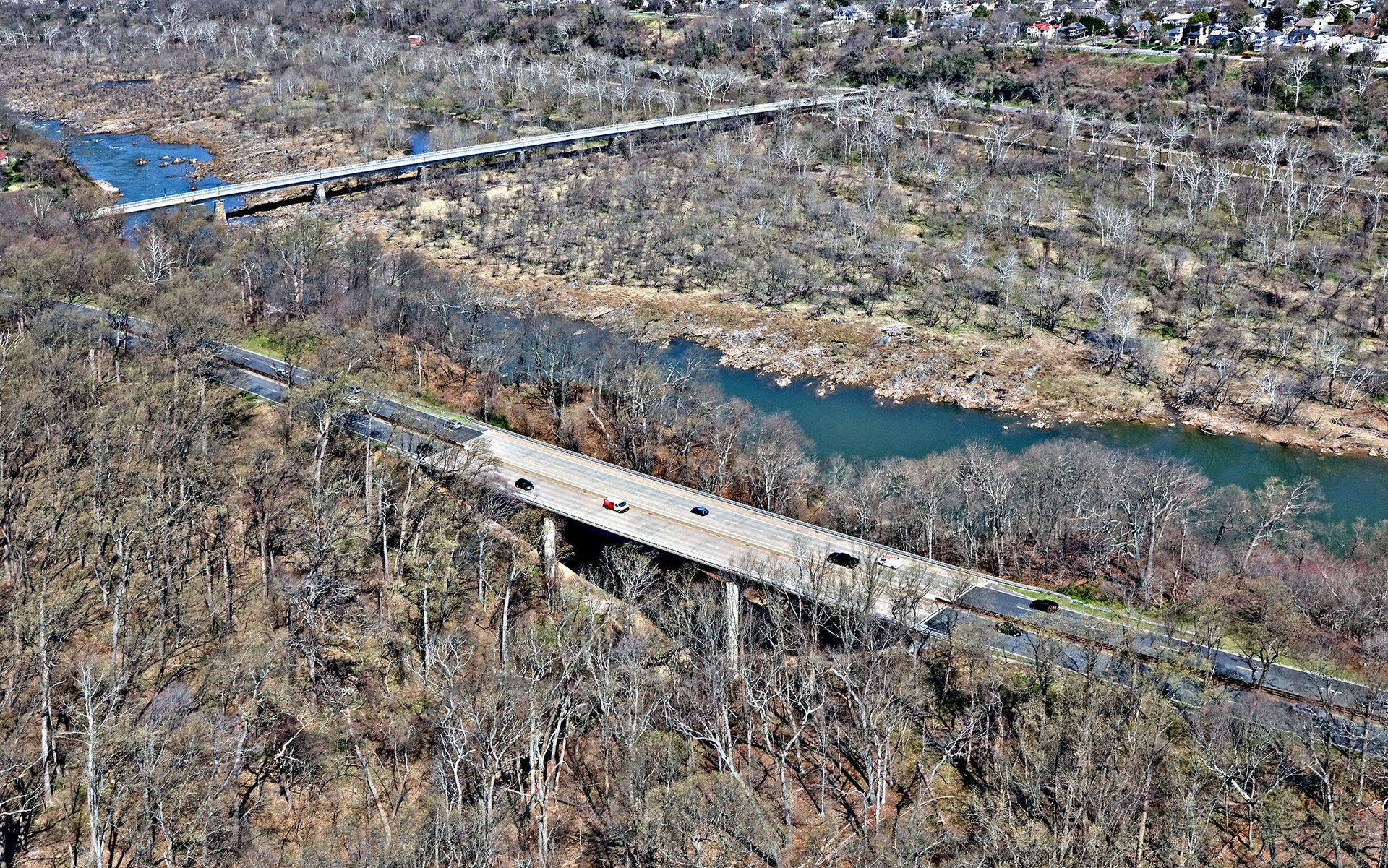
For many Washington, D.C., commuters, the George Washington Memorial Parkway is part of the daily routine of completing their round trip between work and home. But for millions of others, the parkway celebrates the life of George Washington. He connects Great Falls , from where the young Washington once set out on a surveying expedition west, with Mount Vernon, his famous home on the Potomac River in Virginia. In between, he travels through the city that bears his name, through Alexandria, along streets he once walked, and past neighborhoods that were once the homes of his neighbors, political allies, and enemies.
Along the route, it offers visitors places to rest and numerous monuments, memorials and other attractions. Among them United States Marine Corps War Memorial (Iwo Jima Monument), Arlington National Cemetery, the Netherlands Carillon, and Mount Vernon. In addition to being a National Memorial Highway, it serves as a the main transport route with limited access to connecting roads and at-grade intersections and interchanges. The National Park Service, which maintains it, estimates that 6.8 million visitors travel the road each year and visit the various sites along its route.
5. Lake Mead National Recreation Area (Nevada, Arizona)
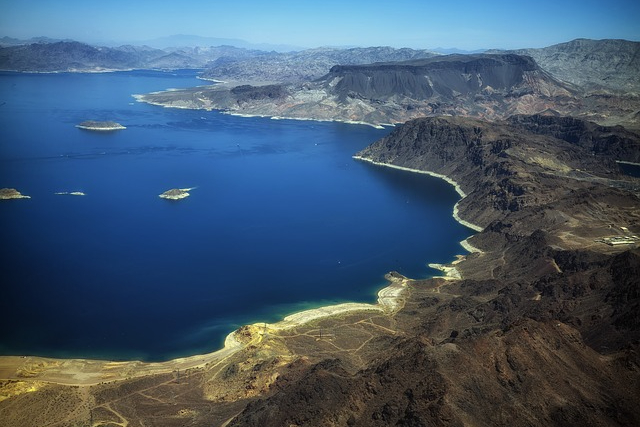
Lake Mead became the center of attention of the country in 2022, as drought caused its waters to recede during the summer months, resulting in the discovery of the remains of several people. Lake Mead was created by the construction of Hoover Dam in the 1930s (renamed Boulder Dam by Roosevelt, and Congress rebuilt the Hoover Dam in 1947). Lake Mead is the largest freshwater reservoir in the world. When the dam was built, the area around the growing lake was designated as a bird refuge. In 1947, by act of Congress, it became the Lake Mead National Recreation Area, becoming the first region to be designated in this way in the United States. In 1964, an expansion included the Lake Mojave region. Part of the recreation area borders Grand Canyon National Park.
Lake Mead offers the intrepid visitor nine distinct wilderness areas; a ghost town St. Thomas, located in Nevada and once completely submerged by the reservoir, and more than 500 species of animals, including two dozen designated as rare or endangered. It also offers visitors freshwater sport fishing, archaeological sites, and, of course, the Hoover Dam itself. The western reaches of Lake Mead are about 30 miles from Las Vegas, Nevada, which offers visitors a variety of recreational activities. The National Park Service ranks Lake Mead Recreation Area as the fifth most visited national park in America, with 7.6 million people visiting annually.
4. Gateway National Recreation Area (New York, New Jersey)

No one usually thinks of New York City and adjacent New Jersey as a parkland suitable for recreation, but Gateway National Recreation Area offers just that, welcoming more than 9 million visitors each year. In 1972, the federal government, with the approval and urging of President Richard Nixon, used eminent domain and state donations to set aside more than 26,600 acres of New York and New Jersey shoreline and nearby lands to create a national park. It included land on Long Island, Staten Island, and Monmouth County in New Jersey. Although not contiguous, the recreation area extends from Frank Charles Memorial Park (near John F. Kennedy International Airport) to the southern tip of Sandy Hook.
Separate from, but adjacent to, the Statue of Liberty National Monument is Ellis Island and the National Immigration Heritage Museum. Gateway National Recreation Area contains its own historic sites, including decommissioned forts and airfields, and offers camping, water sports, beaches and piers as its main attractions for visitors. The park, which turned 50 in 2022, welcomes over 9 million visitors annually, no doubt helped by its proximity to dense urban areas. Part Gunnison Beach on Staten Island is a nude beach, or as the National Park Service calls it, a "clothing-optional beach." Visitors can sunbathe naked, but accompanying pets must be on a leash.
3. Golden Gate National Recreation Area (California)

Created at the same time as Gateway National Recreation Area on the opposite shore, Golden Gate includes several former fortifications. Among them are Alcatraz Island and prison, the Presidio, Fort Mason (which once served as a port of embarkation for U.S. Army ships), and Fort Funston, built to protect San Francisco Bay from attack from the sea. It has been expanded several times since its founding in 1972, and although non-contiguous, it has become one of the most popular parks in the country. More than 13.7 million visitors visit the park or parts of it each year, with Alcatraz being the most popular.
Like its East Coast cousin at Gateway National Recreation Area, Golden Gate offers " nude beach " The northern section, located in San Francisco's Baker Beach neighborhood, in the Presidio area, is one of several nude beaches in the San Francisco area. Public nudity for the most partbanned in San Francisco (without a permit), but Baker Beach is managed and patrolled by the U.S. Park Service, which has no rules prohibiting such behavior. However, according to some reports, the weather in San Francisco often leads to caution among beachgoers.
2. Great Smoky Mountains National Park (Tennessee, North Carolina, Tennessee)
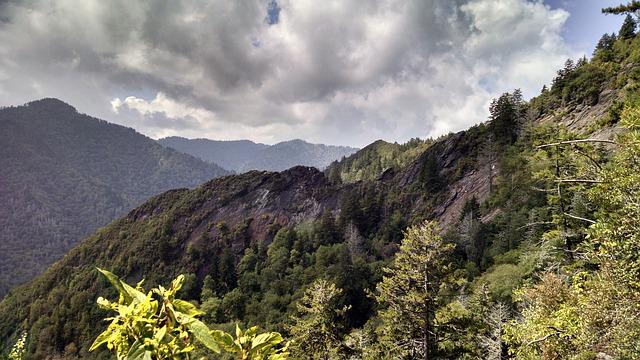
Famous tourist destinations Gatlinburg and Pigeon Forge, Tennessee, are located in the Great Smoky Mountains National Park or on its outskirts Tourist meccas like Dollywood help attract visitors to the region, although the park itself has several attractions, including some of the highest peaks east of the Mississippi River, waterfalls, caves, primitive campsites, and dense forests. The home of the Eastern Band of the Cherokee Nation adjoins the park. The national park was designated a UNESCO World Heritage Site in 1983.
According to the National Park Service, the Smokies are home to more tree species than any other national park, with about a quarter of the park's forest stands classified as old growth. Historic sites are scattered widely throughout the park, some of which are original, while others have been restored and maintained by the NPS. Nearby Gatlinburg and other communities celebrate the region's history of moonshining, feuding, logging, and mining, as well as the Cherokee people and culture. More than 14 million people visit the park each year, making it the second-most visited of all American national parks. Some websites claim it is the most visited national park, although the National Park System gives that honor to another park in the Appalachian region.
1. Blue Ridge Parkway (Virginia, North Carolina)
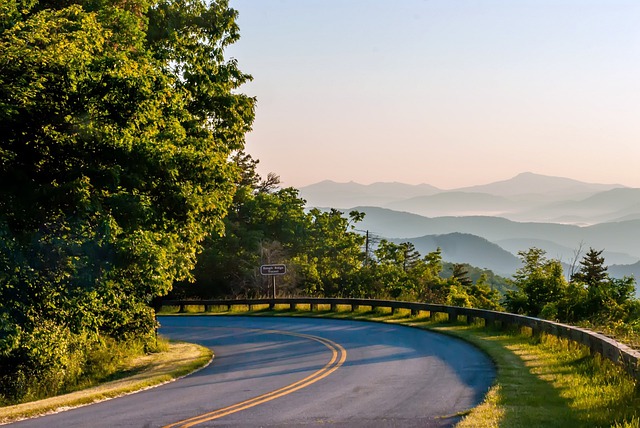
In terms of linear miles, the Blue Ridge Parkway is America’s longest park. It connects the southern end of Virginia’s Shenandoah National Park to Tennessee’s Great Smoky Mountains National Park, a distance of 469 miles, at speeds that never exceed 45 mph. At least according to the posted speed limit. Because of the winding and often blind nature of the road, designed during the Great Depression, many sections are driven at much lower speeds, and some sections are officially closed during the winter and early spring months due to snow, ice, and fog. Construction of the boulevard began during the Great Depression under the direction of the Civilian Conservation Corps. Construction continued during World War II, often serving as a training facility for U.S. Navy construction battalions and the Army Corps of Engineers. It also provided employment for conscientious objectors through the Civilian Public Service program.
The parkway opened in 1946, although construction was not completed until 1987. It has consistently been the most visited of all American national parks since the 1960s. One reason for its popularity is the annual display of foliage during the fall months in the Appalachian Mountains. It provides access to caves and campgrounds, Civil War battlefields, recreation on the Shenandoah River, mountain hiking, and historical celebrations and events. Large trucks, commercial vehicles, or farm equipment are not allowed on the parkway, and never have been. Designated for private driving at a leisurely pace, It receives about 16 million visitors annually, measured by vehicles rather than passengers.













Оставить Комментарий